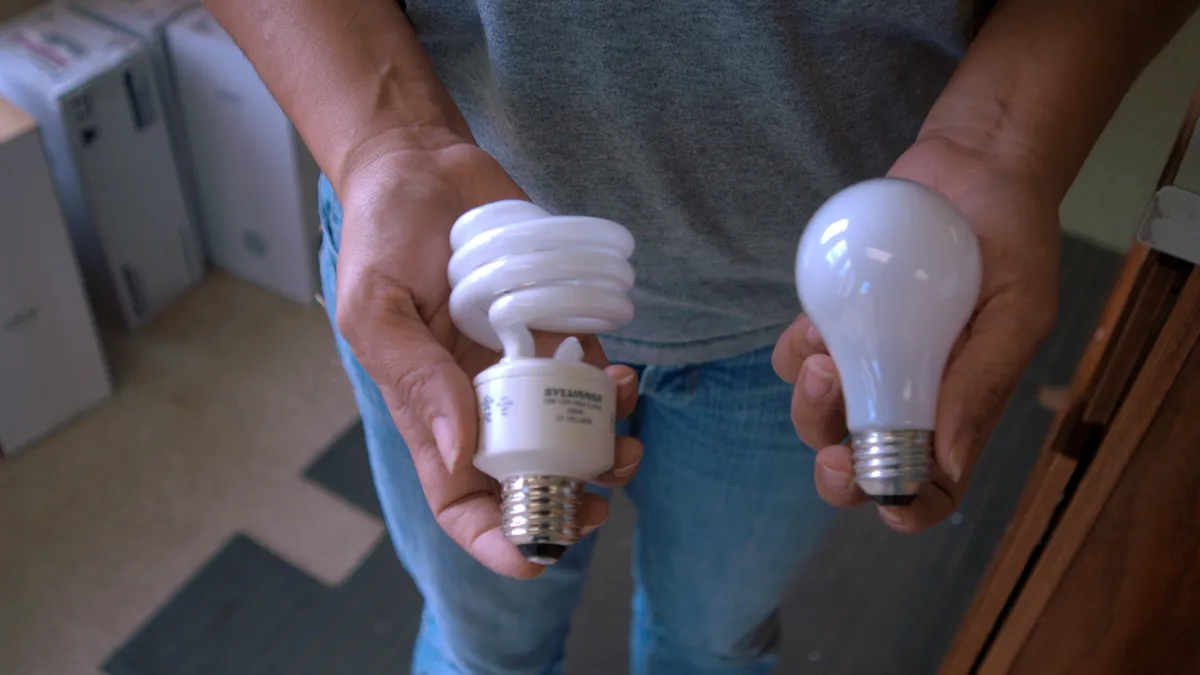The cost of energy efficiency continues to decline, and the opportunities continue to increase. The implications are enormous for utility systems, say experts.
"There will be places where another clean energy resource might be the cheapest option, but in general, energy efficiency outcompetes all the major fossil fuels," said Rachel Gold, head of the utilities program at the American Council for an Energy-Efficient Economy (ACEEE).
And the increasing inclusion of efficiency in clean energy portfolios can help eliminate the need for new gas plants, said Gold.
In a new analysis released Wednesday, ACEEE finds the levelized program cost of saved energy was $0.024/kWh in program year 2018, about a 15% decline from the 2015 program year. The group issues this report every three years.
Comparing efficiency with unsubsidized supply options, ACEEE found efficiency is potentially the lowest-cost resource. The report examined data from the 52 largest investor-owned utilities by sales volume.
Costs for efficiency range from $12 to $49/MWh, compared with $44 to $73/MWh for combined cycle gas generation (CCGT), $26 to $54/MWh for wind and $29 to $42/MWh for solar.
"Utility energy efficiency programs continue to be extremely cost effective," the report concludes. And those programs make up a growing portion of utility resource needs, supplying about 18% now and potentially becoming the United States' largest electricity resource by 2030, according to ACEEE.
That means that as U.S. power demand grows, much of that can be met through conservation. And efficiency is taking on a growing role in utility clean energy portfolios.
"There are at least a dozen utilities or states taking some action to move towards a more robust treatment of clean energy resources in planning," said Gold. "It's a bit of a mix, and the drivers are different from state to state, but there is definitely a trend."
Efficiency isn't going anywhere
Some believe that energy efficiency programs will eventually run out of so-called low-hanging fruit: easy, cost-effective projects that save energy. Lighting is the typical example, where the switch to LEDs has saved consumers billions, but now most less-efficient bulbs have been replaced.
But experts say fears of running out of efficiency appear unfounded.
"So far, energy efficiency is a renewable resource," said Gold. "We're 40 years into energy efficiency, and we continue to get this question every few years."
"I think that the reports of energy efficiency's death are greatly exaggerated," RMI principal Mark Dyson said in an email. He pointed to a 2018 paper from the firm arguing that efficiency potential is growing rather than shrinking.
Modern energy efficiency is "an expanding-quantity, declining-cost resource," RMI co-founder Amory Lovins wrote in that analysis. Adoption of efficiency as a resource "is constrained by major but correctable market failures and increasingly motivated by positive externalities."
Efficiency as part of a clean energy portfolio
Growing research shows that clean energy portfolios — including efficiency, renewables, demand management and storage — can undercut the price of any other resources.
A 2019 report from RMI found an optimized mix of those resources was likely to undercut the operating costs of over 90% of proposed new combined-cycle capacity by 2035, "creating stranded asset risk for investors."
"Our most up-to-date analysis suggests that most proposed CCGT capacity, if built, will be undercut by clean energy costs well before 2035," Dyson said. "This has stayed true even as gas price forecasts have fallen since our report in 2019 — those gas price declines have been offset by clean energy resources continuing to fall in price."
"Those portfolios have the capability to avoid almost all of the new gas being considered around the country," said Gold. But, she added, "we're not yet seeing a lot of utilities do that work to try and optimize resources and avoid fossil fuels."
There are examples, though. Gold points to Glendale Water & Power's all-source procurement to replace the Grayson Power Plant with clean energy resources, and Indiana utilities' increasing use of all-source procurements.
"We see clearly that nonutility investors, who do not enjoy allowed cost recovery through regulated rates, are turning quickly away from new gas plant investment," Dyson said. "Regulated utilities have been slower to turn away from new gas investment, but they and their regulators are starting to follow the same trend."
South Carolina regulators on Thursday rejected Duke Energy's integrated resource plan, which contained several different proposals for meeting long-term demand, including development of new gas-fired plants. Dyson said the South Carolina decision "is a great example of that trend making its way into PUC decisions around the country."
"Regulators are increasingly aware of and concerned by the stranded asset risk posed by new gas plant investment," he said.
Efficiency values beyond cost
While the saved kilowatt can be cheapest, that is not always the case, and ACEEE's report is a reminder that utilities implement efficiency programs for a variety of reasons.
The report notes low-income efficiency programs "are pursued for customer equity objectives rather than least-cost resource planning," and they have a higher cost of saved energy than other programs. ACEEE found the levelized program cost of saved energy in 2018, when low- and moderate-income programs were excluded, dropped to $0.021/kWh.
"However, even considering the higher costs of low-income programs, the aggregate cost of saved energy remains comparable to the least-cost generation resources available to grid planners," the report added. "A purely cost-based analysis does not capture the full benefits of efficiency."
The value of efficiency also fluctuates "depending on what system planners are solving for," said Gold. Energy efficiency can be used for peak demand reduction, to address ramping periods, grid resilience, maintenance deferral and to lower operating costs. Ultimately, the report recommended investor-owned utilities work to expand their efficiency portfolios.
"Although the costs of renewable generation have fallen dramatically over the last decade to become some of the most affordable sources of energy available on the grid today, the low cost of energy efficiency proves that it should be an essential part of any least-cost infrastructure plan," ACEEE found.






















